Selling price (excluding shipping and support)
The blade is a strong and dynamic work.
This Katana blade was forged by Kunimatsu, one of the most famous blacksmiths of the Showa era (1926-1989). The blade is very well preserved, without any particular forging defect, but with a few small stains and scratches (see photos). The Koshirae is composed of a Saya from the period and a Tosogu from the Edo period with a very old Tsuba.
BLADE CHARACTERISTICS:
• Zaimei (with signature): 邦松作 “Kunimatsu Saku”
• Name of the swordsmith: Miyake Kunimatsu (三宅邦松), born in 1944.
• Classification: Kunimatsu Miyake is generally considered a swordsmith renowned for the quality of his work, which reflects perfect adherence to traditional Japanese sword-making techniques, even at a time when many swords were mass-produced for military purposes. Collectors and enthusiasts often appreciate his blades for their quality and historical significance.
• Period: Showa (1926-1989) • Nagasa: 71.5 cm
• Blade weight: 784 grs
• Sori: Height: 1.1 cm - Type: Tori-zori
• Mekugi-ana: Number: 1
• Sugata type: Shinogi-zukuri
• Throats: Bo-hi (With)
• Hamon type: Suguha (straight), beautiful temper line
• Kissaki type: Chu-kissaki (medium)
• Condition: Very good general condition of the sword
• Defects: Some stains and some scratches
KOSHIRAE:
• Tsuka: Length: 25.5 cm - Type of braiding: Hineri-maki in black Japanese natural silk
• Tsuba: Sukashi - Very old - Material: iron and brass inlay - Period: 17th century
• Fuchi/Kashira - Edo period
• Habaki: Superb and very rare, from Edo Period, Silver Plated
• 2 Menuki: Very beautiful Menuki in Shakudo, character motifs – Edo Period
• 2 recent Seppa, gold plated
• Saya: Color: Black/Grey glitter and a Sageo in black and white Japanese silk braided in Ronin Musubi. The Kojiri, the Koiguchi and the Kurigata are made of buffalo horn.
THE SWORDSMITH:
Miyake Kunimatsu (三宅邦松) is a modern Japanese blacksmith from Bitchu province. Born in 1944, his real name: Miyake Teruyoshi, he studied Japanese swords and Tosogu with Ikeda Suematsu and Sasano Taiko. He also learned sword forging from Hiroki Hirokuni. He obtained his swordsmith license from the Agency for Cultural Affairs in 1989 and began entering his swords in swordsmithing competitions from that year onwards. His work is in the tradition of Gendai-tō, which refers to swords made in the modern era using traditional techniques.
Kunimatsu's blades are known for their craftsmanship and adherence to traditional forging methods, even at a time when many swords were mass-produced for military purposes. In 1994, Miyake Kunimatsu even founded the "Nihon Tosogu" museum, becoming its chairman of the board. He lives in Toshima, Tokyo.













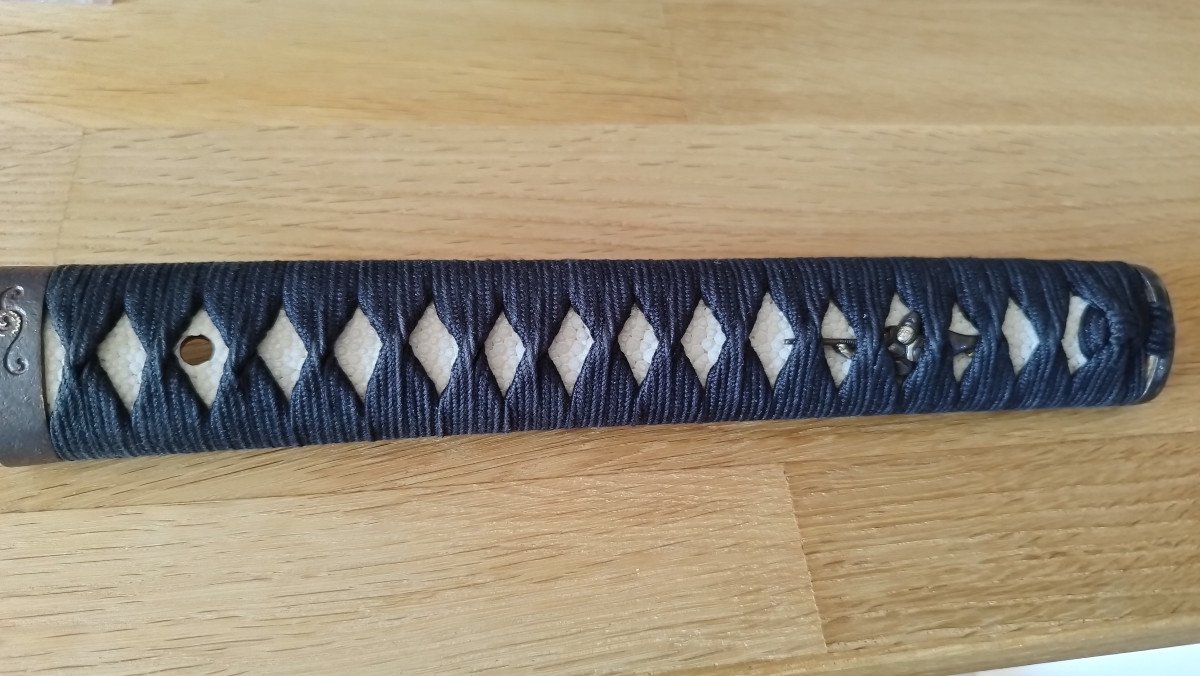














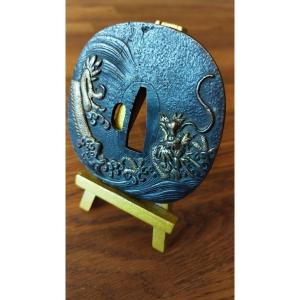
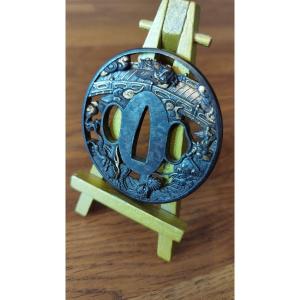

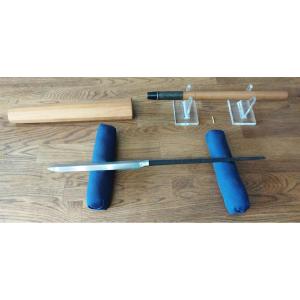



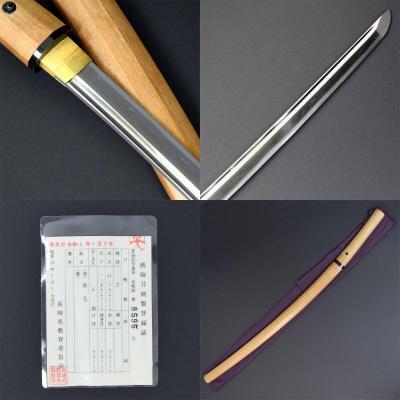
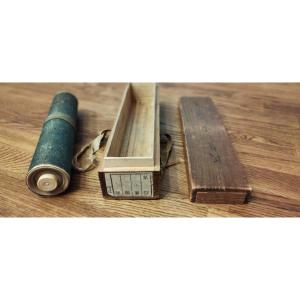
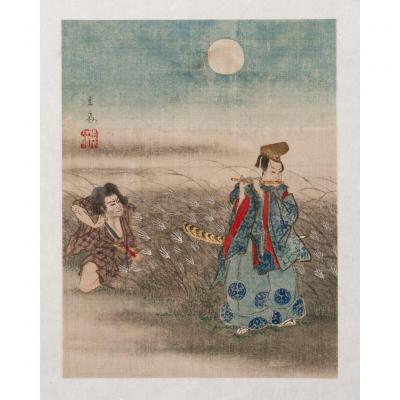
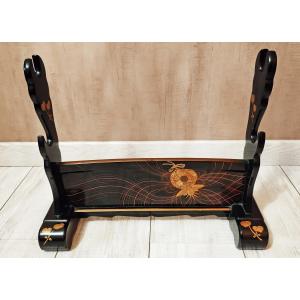
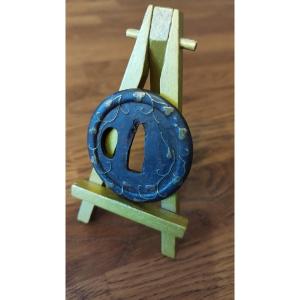

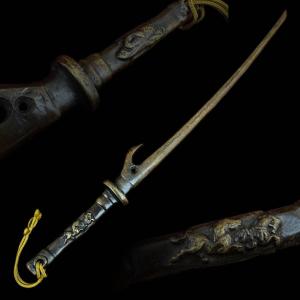

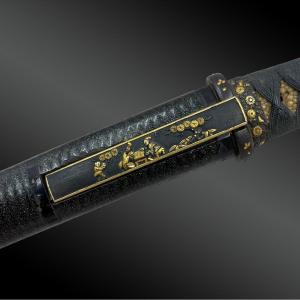
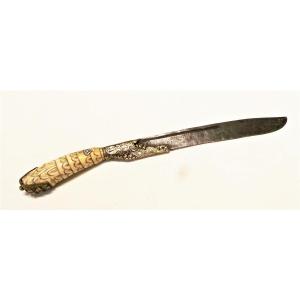
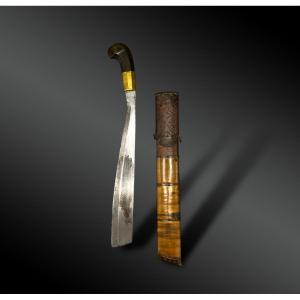
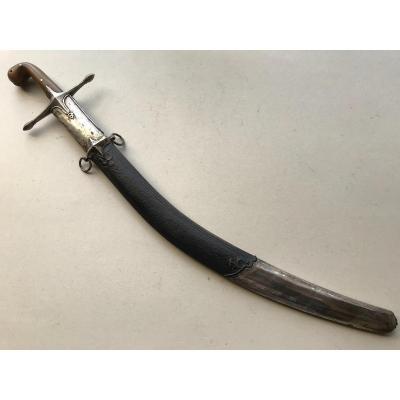



 Le Magazine de PROANTIC
Le Magazine de PROANTIC TRÉSORS Magazine
TRÉSORS Magazine Rivista Artiquariato
Rivista Artiquariato